Toyota Corolla (E120): System description
The ecm uses signals from the vehicle speed sensor and crankshaft position sensor to detect the actual gear position (1st, 2nd, 3rd or o/d gear).
Then the ecm compares the actual gear with the shift schedule in the ecm memory to detect the mechanical trouble of the shift solenoid valves, the valve body or automatic transaxle (clutch, brake or gear etc.).

Monitor description
The ecm commands gear shifts by turning the shift solenoid valves ”on/off”. According to the input shaft revolution, intermediate (counter) shaft revolution and output shaft revolution, the ecm detects the actual gear position (1st, 2nd, 3rd or o/d gear position). When the gear position commanded by the ecm and the actual gear position are not same, the ecm illuminates the mil.
Monitor strategy

Typical enabling conditions
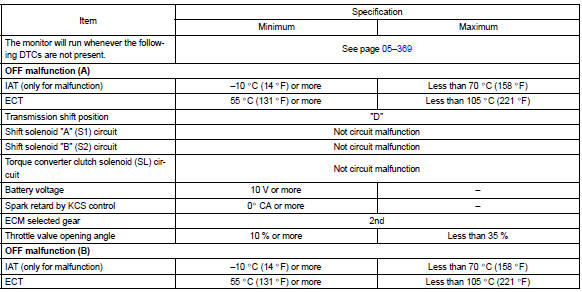
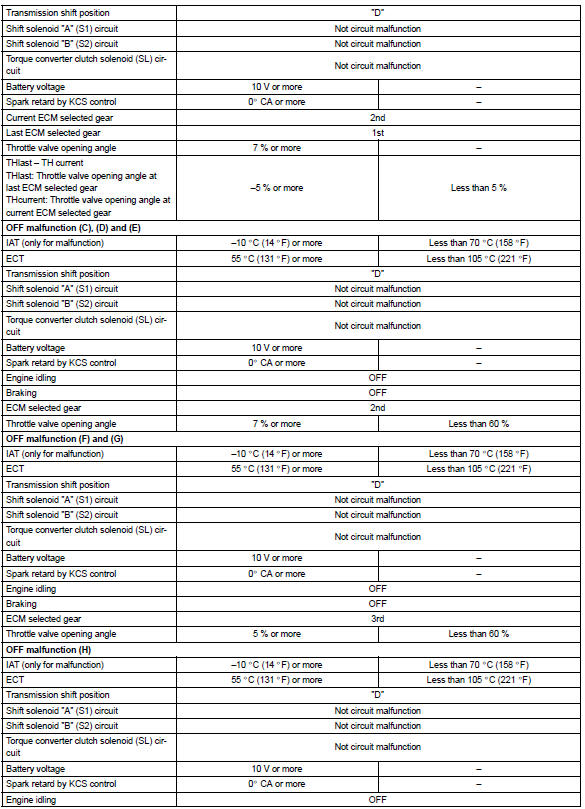
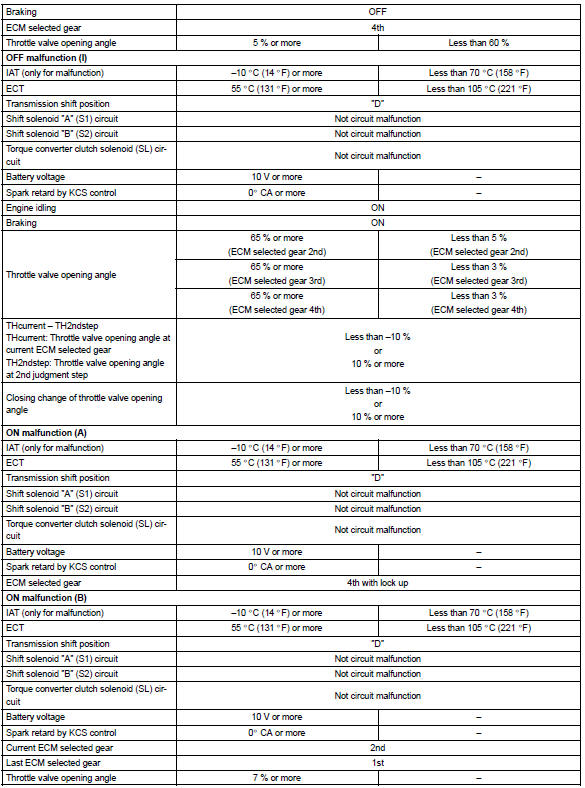
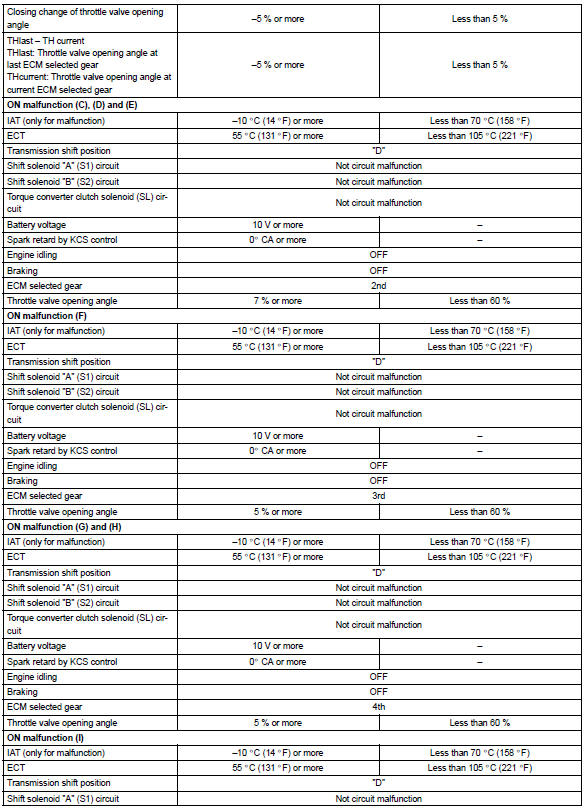
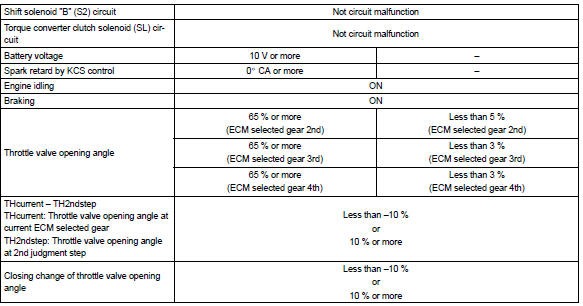
Typical malfunction thresholds
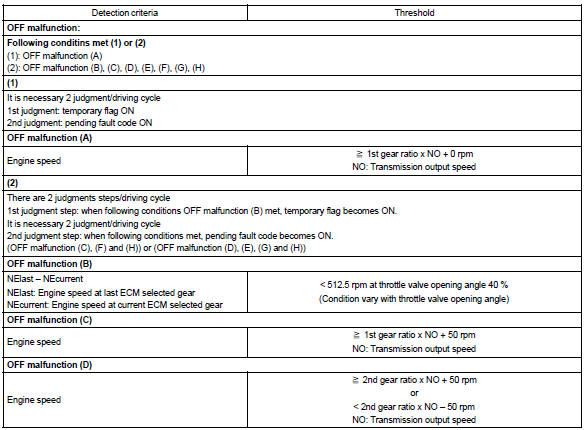
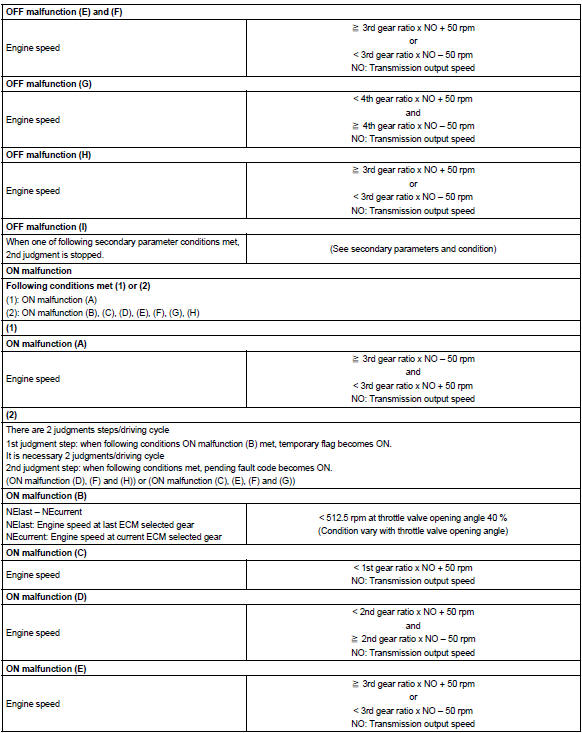
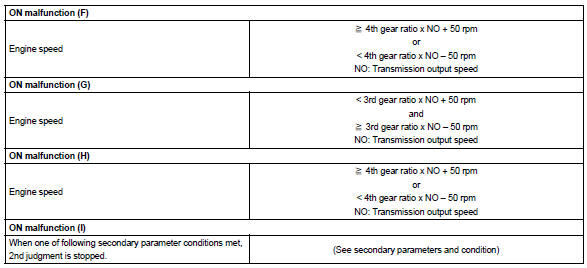
Typical malfunction thresholds
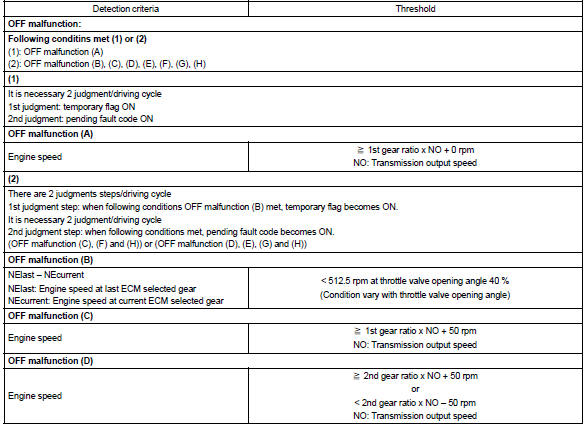
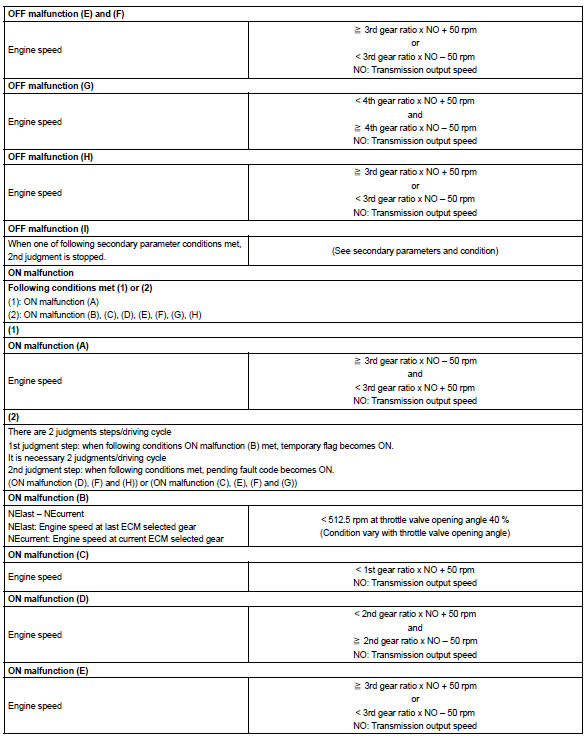
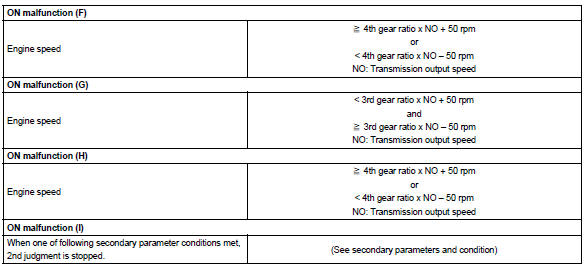
Other materials:
Inspection procedure
Hint:
troubleshoot each trouble symptom in accordance with the chart below.
1 Clear dtc
Connect the hand–held tester or the obd ii scan tool to the dlc 3.
turn the ignition switch on and push the hand–held tester or the
obd ii scan tool main switch on.
read the dtc . ...
Circuit description
Refer to dtc c0200/31, c0205/32, c1235/35, c1236/36
Hint:
Dtc no. C0210/33, c1238/38 is for the right rear speed sensor.
Dtc no. C0215/34, c1239/39 is for the left rear speed sensor.
Wiring diagram
...
Road test
1. Problem symptom confirmation
Taking into consideration the results of the customer problem analysis,
try to reproduce the symptoms
of the trouble. If the problem is that the transaxle does not shift up,
shift down, or the shift point is too
high or too low conduct the following road ...


